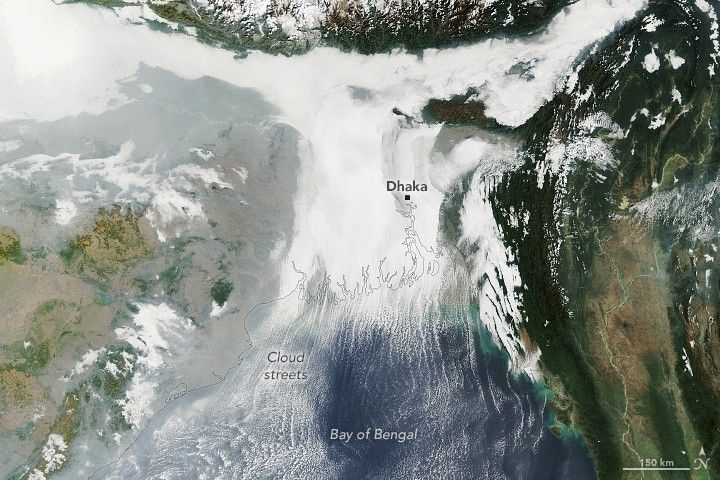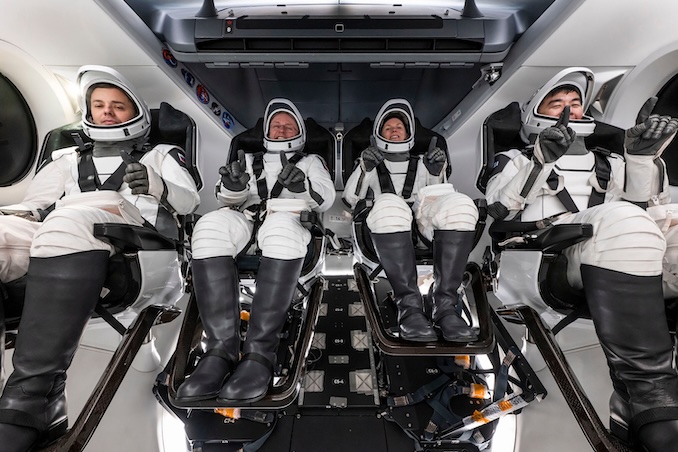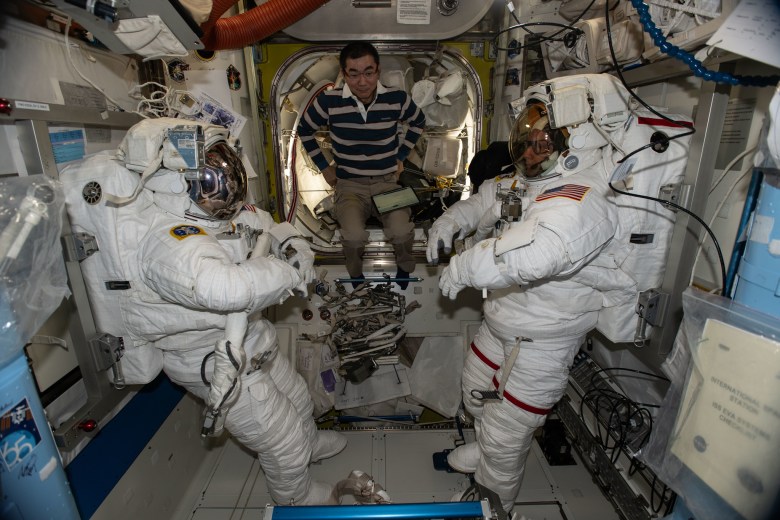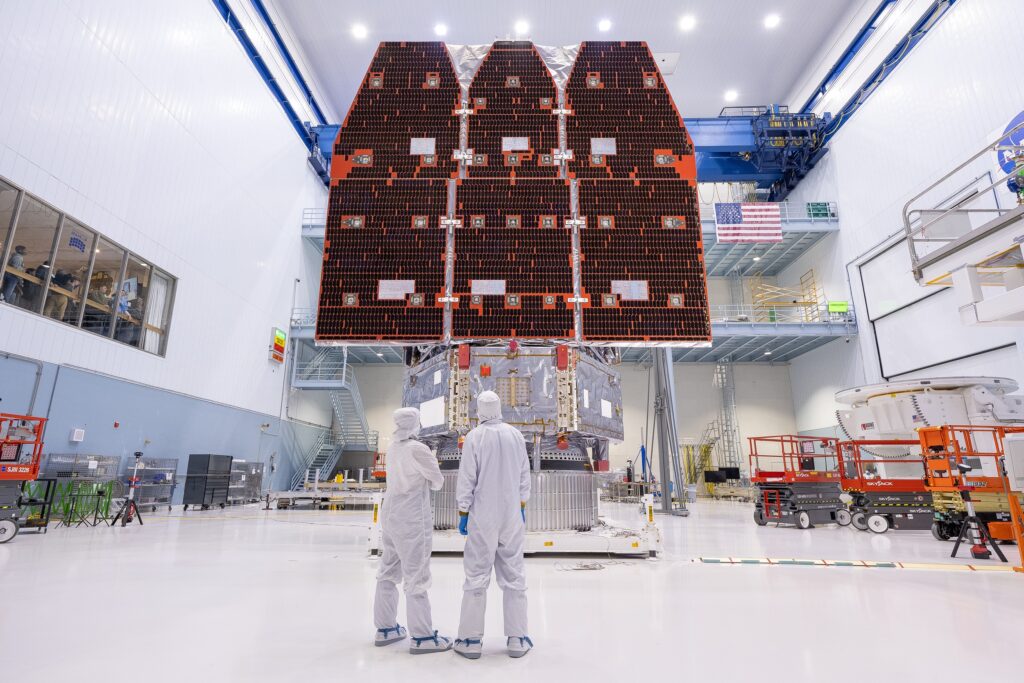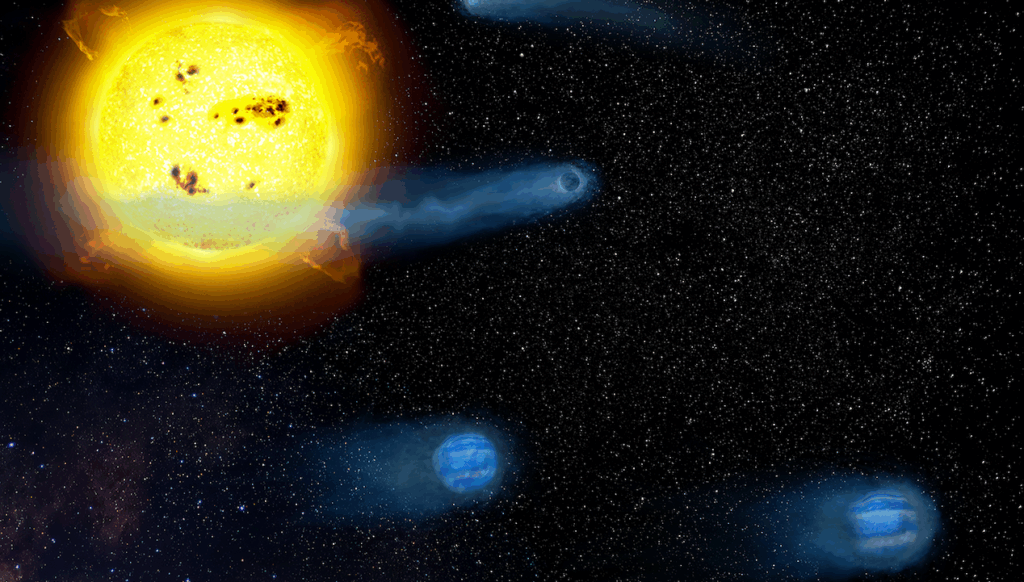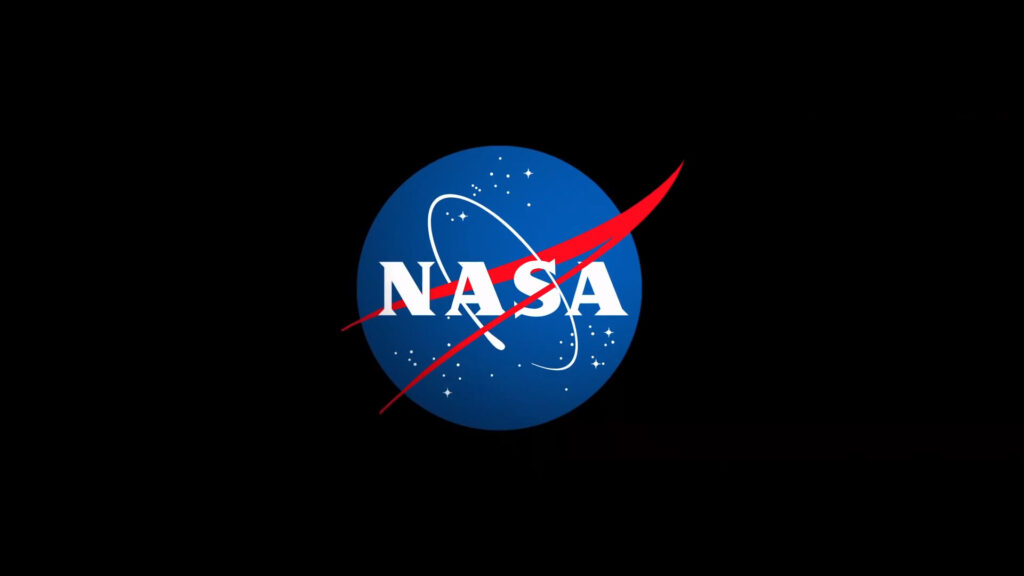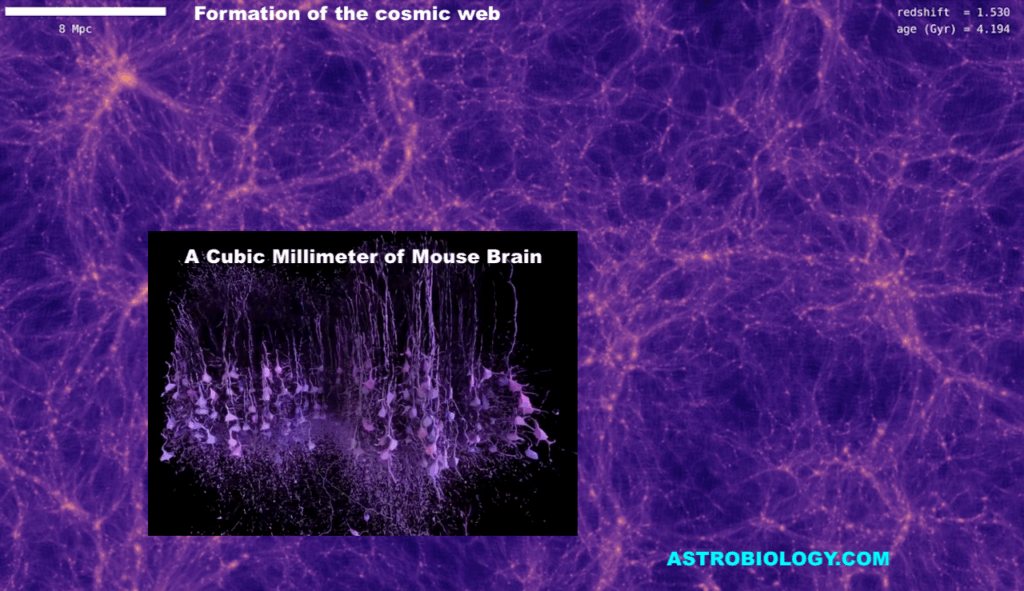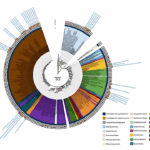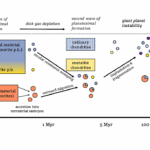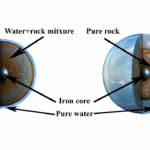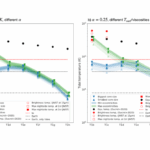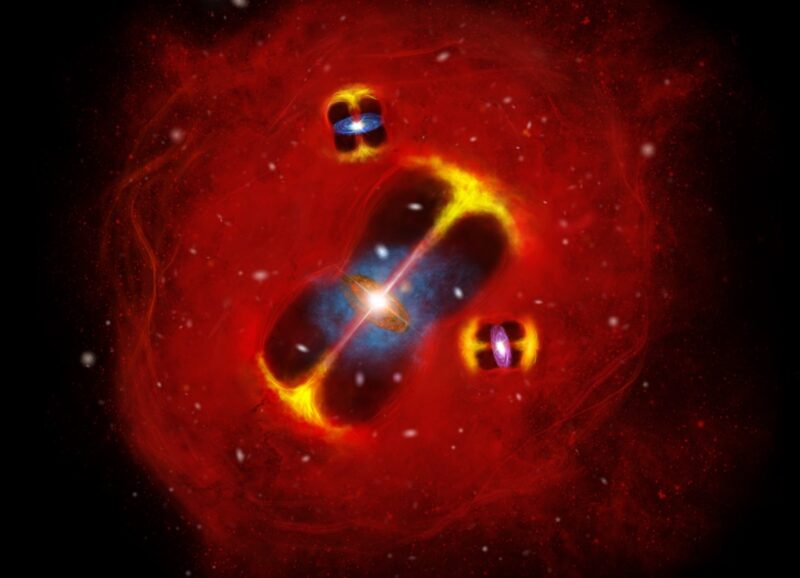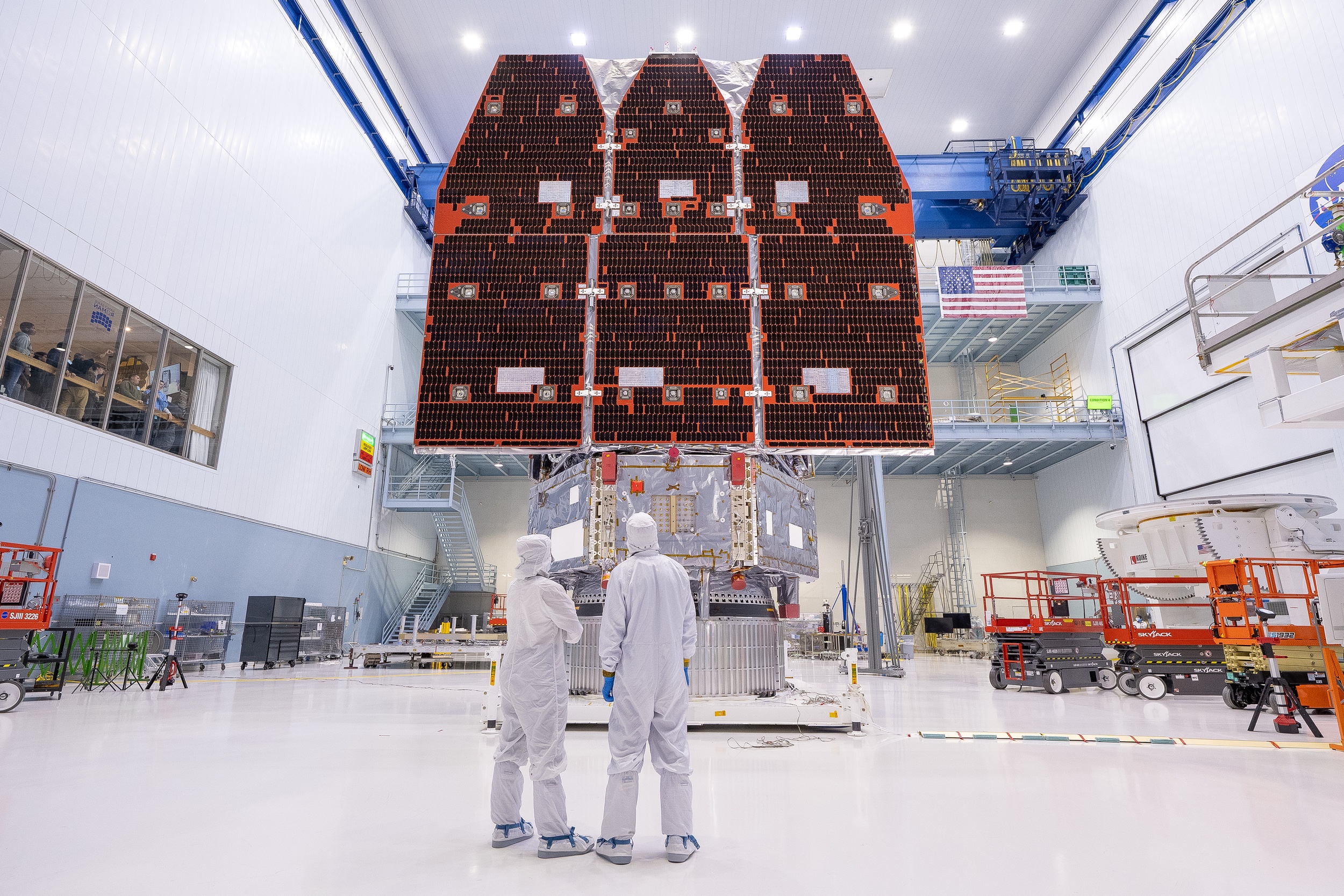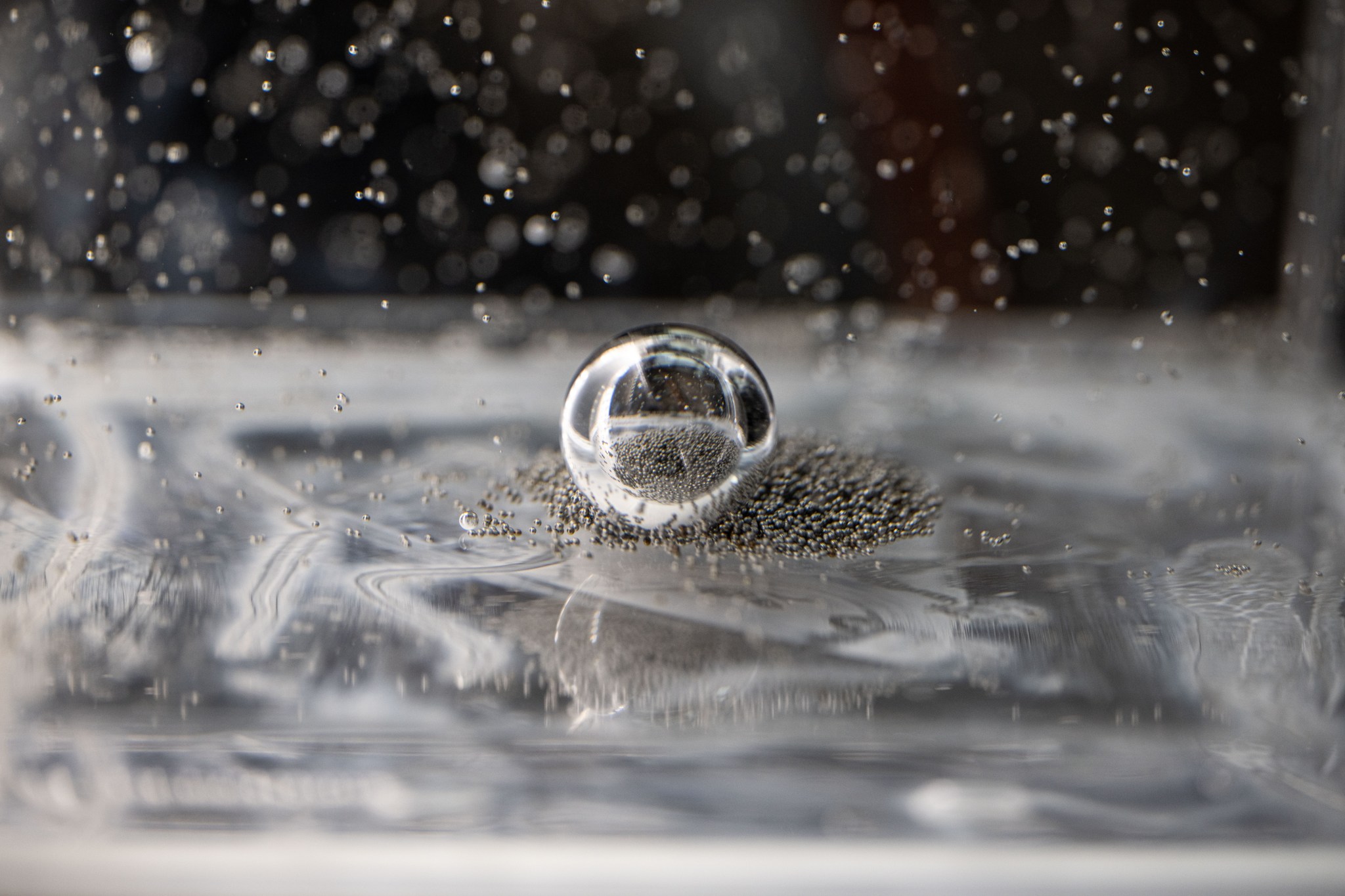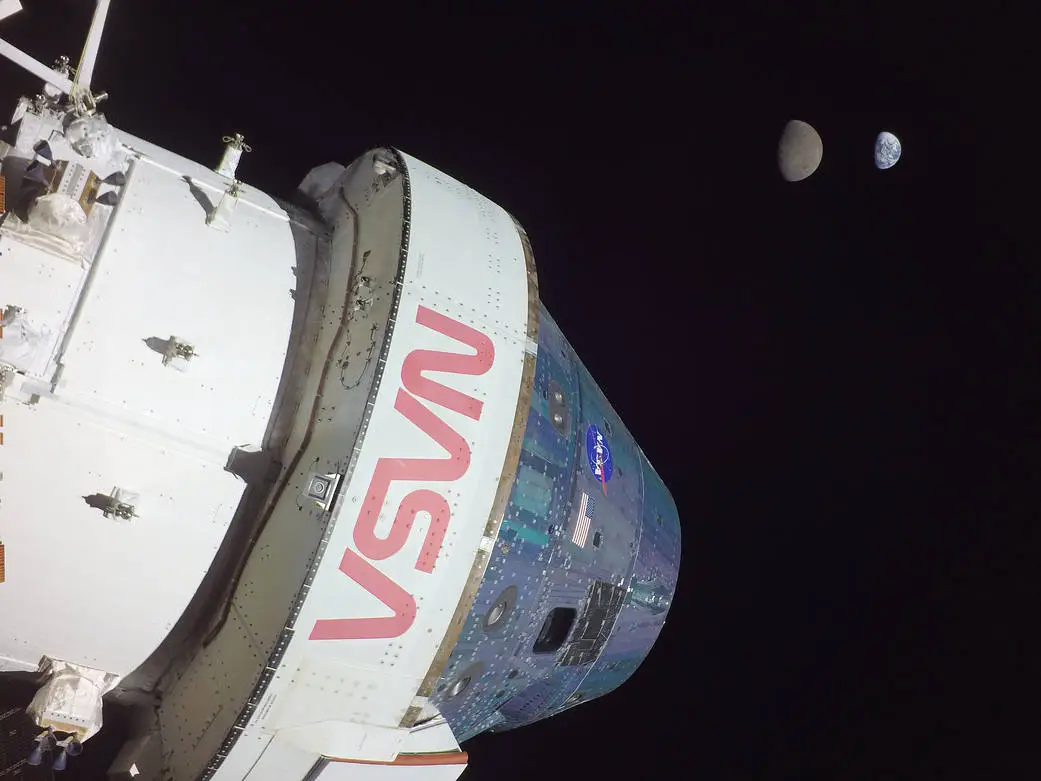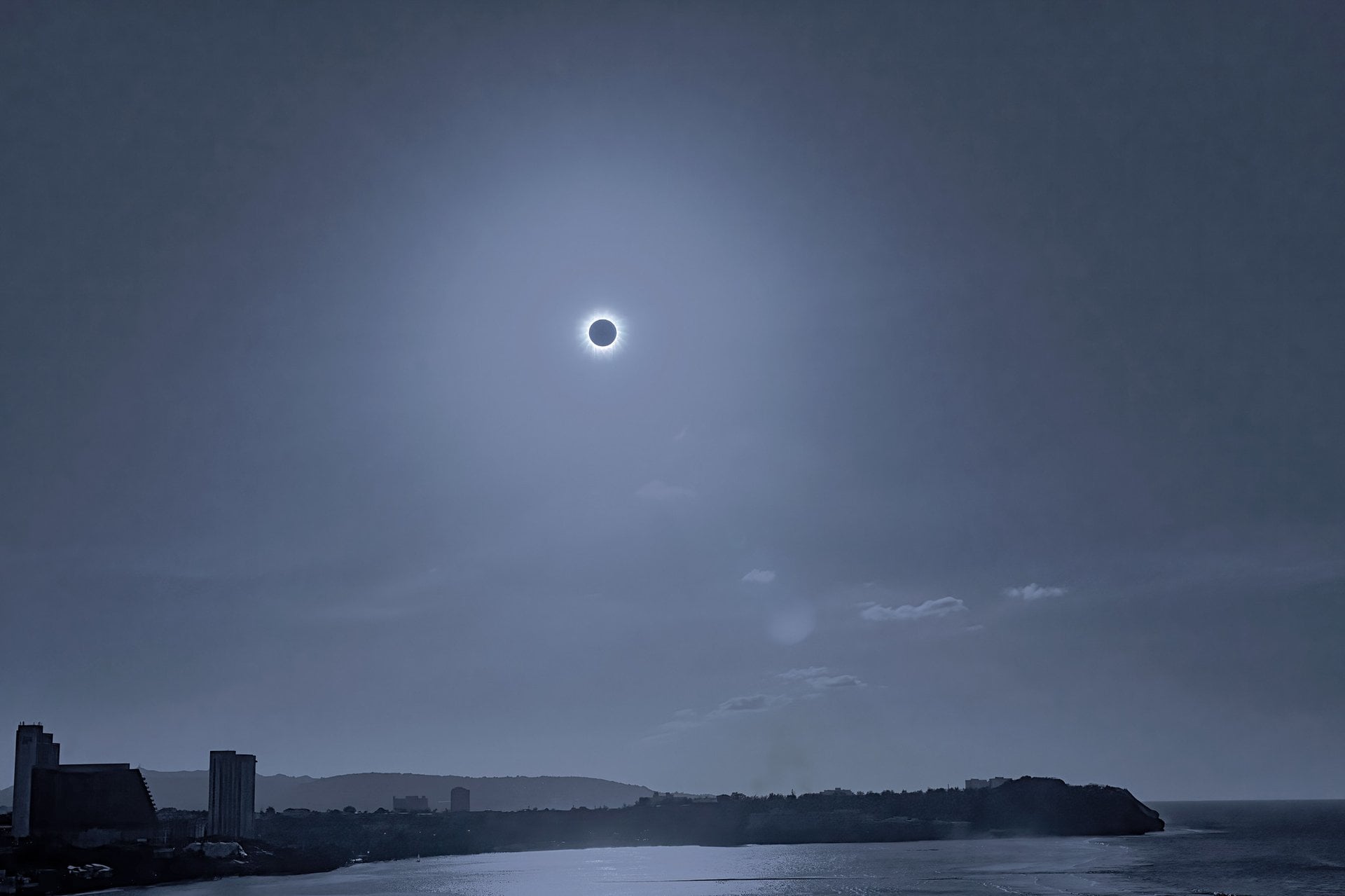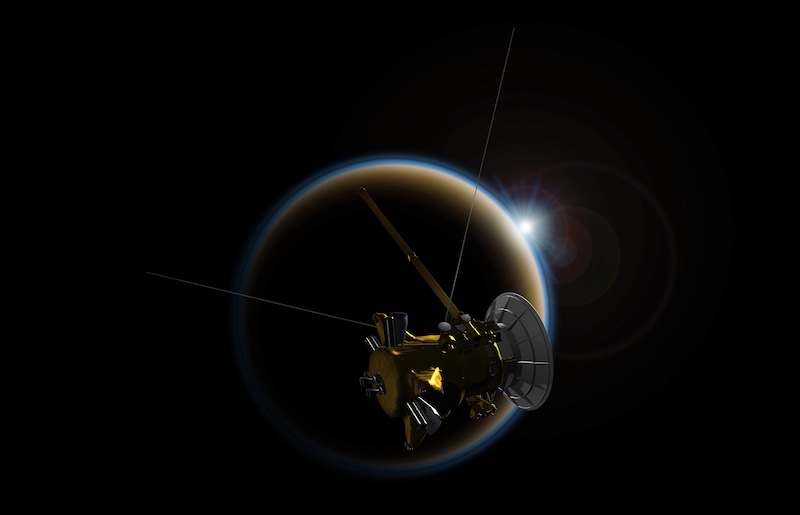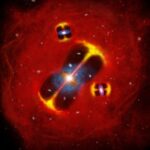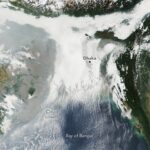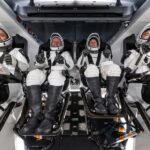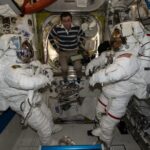Plot of the Habitable Zone (HZ) completeness as a function of host star luminosity (in units of Solar luminosity) and distance (in parsecs). Here the AYO results are on the
NASA/Zena Cardman In this Oct. 20, 2025, photo, tiny ball bearings surround a larger central bearing during the Fluid Particles experiment, conducted inside the Microgravity Science Glovebox (MSG) aboard the
Gamma-ray bursts (GRBs) are among the most powerful explosions in the universe, second only to the Big Bang. The majority of these bursts are observed to flash and fade within
Leading X-ray space telescopes XMM-Newton and XRISM have spotted a never-seen-before blast from a supermassive black hole. In a matter of hours, the gravitational monster whipped up powerful winds, flinging
Even most rocket scientists would rather avoid hard math when they don’t have to do it. So when it comes to figuring out orbits in complex three-body systems, like those
Using the James Webb Space Telescope (JWST), an international team of astronomers has observed an elliptical galaxy known as NGC 4486B. Results of the observational campaign, published Dec. 16 on
Ready for another amazing year of skywatching? 2025 was a wild year, with a steady parade of comets knocking on naked eye visibility, and one extra special interstellar comet, 3I/ATLAS.
Imagine a year filled with the breathtaking beauty of the universe, captured through the lens of humanity’s most advanced telescope—the James Webb Space Telescope. This 2026 Astronomy Wall Calendar invites
View larger. | Artist’s illustration of the Cassini spacecraft during a flyby of Titan. Previous analysis of data from Cassini suggested Titan had a global ocean of water beneath its
An international team of astronomers has achieved a first in probing the early universe, using the James Webb Space Telescope (JWST), detecting a supernova—the explosive death of a massive star—at
-
 01From Polymerization-Enabled Folding and Assembly to Chemical Evolution: Key Processes for Emergence of Functional Polymers in the Origin of Life
01From Polymerization-Enabled Folding and Assembly to Chemical Evolution: Key Processes for Emergence of Functional Polymers in the Origin of Life -
 02Two Black Holes Observed Circling Each Other for the First Time
02Two Black Holes Observed Circling Each Other for the First Time -
 03How New NASA, India Earth Satellite NISAR Will See Earth
03How New NASA, India Earth Satellite NISAR Will See Earth -
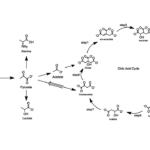 04Thermodynamic Constraints On The Citric Acid Cycle And Related Reactions In Ocean World Interiors
04Thermodynamic Constraints On The Citric Acid Cycle And Related Reactions In Ocean World Interiors -
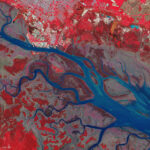 05Φsat-2 begins science phase for AI Earth images
05Φsat-2 begins science phase for AI Earth images -
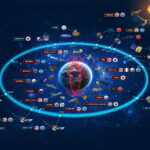 06Hurricane forecasters are losing 3 key satellites ahead of peak storm season − a meteorologist explains why it matters
06Hurricane forecasters are losing 3 key satellites ahead of peak storm season − a meteorologist explains why it matters -
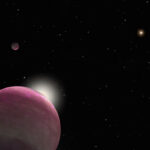 07Binary star systems are complex astronomical objects − a new AI approach could pin down their properties quickly
07Binary star systems are complex astronomical objects − a new AI approach could pin down their properties quickly


